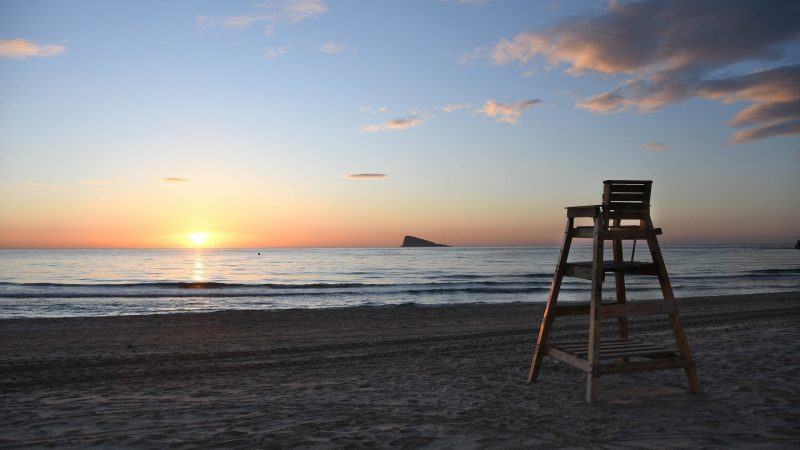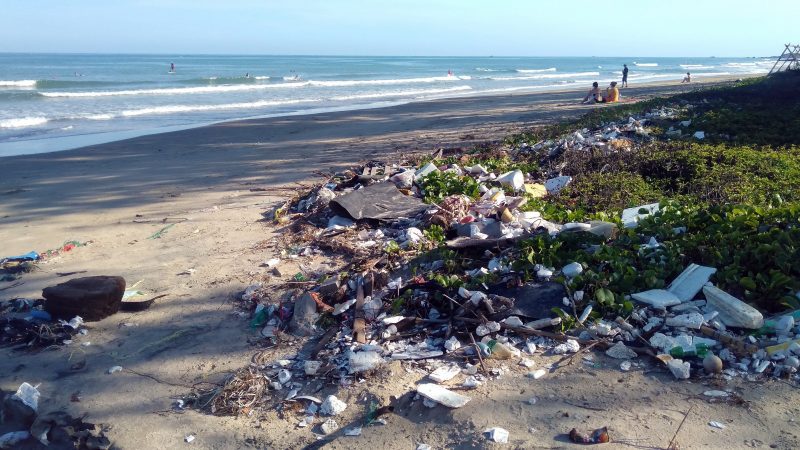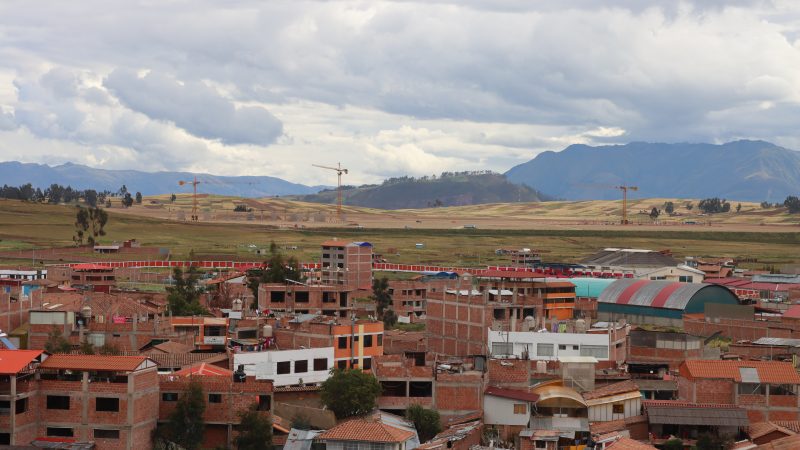This essay was submitted in 2023 as coursework toward a Master of Science degree in Sustainable Development. All work belongs to the website author. Title image by JuanCernas from Pixabay.
Introduction
LiDAR (Light Detection and Ranging), also referred to as 3-D laser scanning, is a high-resolution remote sensing technology used both aerially and terrestrially. It has applications in various industries and scientific realms but has particularly revolutionized archaeology and cultural heritage preservation through its gradual adoption this century. LiDAR facilitates the creation of extremely detailed 3-D images of scanned sites, which can be used to construct a digital record for research, educational and preservation purposes. These records can be particularly valuable in case of damage or destruction from looting, natural disaster, climate change, conflict, terrorism, and development projects such as road building, clear cutting of forests, etc.
In the realm of archaeological research and fieldwork, LiDAR can digitally ‘peel back’ layers of vegetation, allowing an unprecedented view of anthropogenic structures (or their traces) underneath, which can reveal in a matter of weeks what often previously took years or even decades of painstaking fieldwork, all without disturbing the site physically. One archaeologist summed up LiDAR’s impact this way: “Our archaeological universe is going through its own big bang” (Fisher, 2019). For already excavated archaeological and cultural heritage sites, LiDAR has shown its utility in places such as Myanmar, where scans of the temples of Bagan completed shortly before they were severely damaged in an earthquake have helped to assess the damage and aid in restoration efforts (Scientific American, 2017).
However, LiDAR’s use in archaeology and cultural heritage preservation is not without controversy. Debate surrounds ethical issues regarding ownership, access and use of LiDAR data, and questions of whether the technology is being misused to perpetuate colonialism in a modern, digital form. In an analysis of archaeological LiDAR and ethics, Cohen, et al. (2020) stated that the technology: “has moved well beyond making beautiful image products and improving survey techniques … the time has, therefore, come to systematically confront the ethical concerns that have been raised” (p. 79).
This essay will discuss and analyze the various controversies surrounding LiDAR’s use in the fields of archaeology and cultural heritage preservation, primarily through the concept of coloniality while also occasionally drawing from the feminist literature on situated knowledges to provide a more well-rounded analysis. Having interrogated these controversies, I will then directly address the question: to what extent does LiDAR’s current manner of use in the Global South amount to digital colonialism? Finally, since my analysis will have offered hints on this point, I will briefly explore what might be done to attempt to decolonize LiDAR’s use in this realm.
Controversies and Analysis
LiDAR data collection, access, ownership, use and retention
LiDAR is in use for archaeological and cultural heritage preservation purposes by numerous actors, including universities, companies, governments and non-profit organizations. The equipment and training needed to conduct, interpret and store LiDAR scans is significant and costly, leading to what Fernandez-Diaz, et al. (2018) termed the “lidar elite” in academia, which Agapiou and Lysandrou’s (2015) mapping of scientific literature published on the subject of remote sensing archaeology has confirmed is clustered in the Global North (Europe and North America in particular). Much of the data collected by publicly or academically funded LiDAR scans have also not been openly shared; for instance, as of 2022 none of the scans funded by the US National Science Foundation have been made open access (Cohen, et al., 2022).
Outside academia and the public sector, the main organizations involved are the non-profit California-based CyArk with their partner Google Arts & Culture, and the French company Iconem with their partner Microsoft; again, organizations based in the Global North with corresponding access to project funding (Shein, 2018). Additionally, when companies or non-profit organizations are involved in LiDAR scanning projects of cultural heritage sites, they frequently retain the copyrights to the data. The frequency with which LiDAR data have been withheld from stakeholders by both public and private interests has led critics to refer to the technology’s use on sites in the Global South as a form of ‘digital colonialism’, particularly considering that, assuming it did not commission and fund the scan itself, the country where a site is located must obtain permission before using scans for commercial purposes (Sydell, 2018).
Even before LiDAR scans are made, the process of gaining the approval of all stakeholders for a given site can be problematic. In some countries, cultural heritage is considered the property not of individual communities but of the entire nation, meaning that although the necessary legal permissions may have been obtained (i.e., from the central government), by no means does that imply the support or even engagement of all stakeholders (Cohen, 2020). In societies where certain groups such as ethnic minorities or indigenous populations are disadvantaged or marginalized, this example points out that modern colonialism need not necessarily be imposed by an outside (foreign) actor (Short, 2005).
It is also important to consider whether LiDAR can credibly be considered a non-invasive technology, as this is perceived as one of its greatest strengths. While it is true that aerially conducted scans leave the landscape untouched, the work that follows frequently does not. One archaeologist wrote of his return to a remote site one year after conducting a scan and very small-scale ground level exploration, only to find land cleared for helicopters to land, the departure of wildlife that was previously present, and plastic waste littered by workers during the intervening time (Fisher, 2019). Additionally, in arguing that invasiveness is not only a physical characteristic, Cohen, et al. (2020) raised the hypothetical but realistic example of cooperating with an authoritarian government to conduct scans of inhabited archaeological or cultural sites (thus scanning people and their homes in astonishing detail), concluding that “our archaeological understanding of techniques like lidar as being ‘non-destructive’ and ‘non-invasive’ is deeply problematic” (p. 84).
For further analysis, the literature on colonialist capitalist ‘accumulation by dispossession’ (Harvey, 2003) is a valuable source for applying the concept of coloniality to LiDAR’s use in the Global South. While the digital age has evolved considerably since Harvey’s book was written, his example of the importance afforded to intellectual property rights in WTO negotiations concerning genetic material and seed plasma suggests that dispossession can take the form of not only extraction of resources or physical artefacts, but also the extraction (via digital ‘ownership’) of knowledge and information. Harvey (2003) included the damage to habitats and to the ‘global environmental commons’ as part and parcel of dispossession, indicating that the same can be said for the above-mentioned destructive effects of LiDAR use in the Global South.
‘Lost Cities’ and the discovery trope
Controversy has also surrounded the sometimes sensationalist accounts of western expeditions and their ‘discovery’ of ‘lost’ settlements using LiDAR technology. In the Mosquitia region of Honduras, reports of the 2015 ‘discovery’ of the purportedly ‘lost’ site of the legendary La Ciudad Blanca (The White City) using LiDAR generated significant media attention and led to two books and a documentary film, despite the fact that La Ciudad Blanca is a legend that experts don’t believe refers to a specific place, and that the site in question was already known to local indigenous communities and archaeologists (Joyce, 2015; Begley, 2017). This led numerous experts in the fields of archaeology and anthropology to write an open letter criticizing the operation, arguing that the exaggeration of the achievements of the expedition constituted “disrespect for indigenous knowledge” and the ignoring of years of scientific research (with indigenous participation) that had already taken place in the region (Yuhas, 2015).
Christopher Begley, an archaeologist, expert on the Mosquitia region and one of the lead authors of the letter, criticized this and similar ‘discoveries’ emphasizing the idea of finding sites rather than finding out about them, a focus which he claims has its roots in the colonial exploration narrative which tends to credit western explorers with “discoveries” while ignoring local populations and their knowledge of the same places (Yuhas, 2015; Begley, 2017). Begley (2016) argued that: “The many purported discoveries of the White City perpetuate vestiges of a colonial discourse, camouflaging privilege and oppression within the seemingly neutral rhetoric of science, discovery, technology and exploration” (pp.36-37).
Dramatic ‘lost city’ narratives stemming from LiDAR scanning projects are not limited to La Ciudad Blanca. Cohen, et al. (2020) discuss the example of the Angkor site of the Khmer Empire in Cambodia, where sensationalist media coverage about ‘lost’ settlements there egregiously overlooked the fact that the sites were never lost or abandoned, but in fact show evidence of being continuously inhabited for centuries, continuing to the present day. They consider this to have been a case of a fantastical public narrative overwhelming the factual accounts offered by researchers and the local community, saying that it:
…speaks to a wider problem of public perception of our lidar work, which lies at the intersection of fantasies about exploration and discovery, and excitement about high-tech applications of lasers in the jungle. All of this is profoundly at odds with our desire to come to terms with legacies of colonialism in our discipline and suggests that we have a long and difficult road ahead in amplifying marginalized voices promoting alternatives to these kinds of narratives (Cohen, et al., 2020, p. 85).
Looking to the literature on coloniality to aid in the analysis of the various iterations of the ‘lost city’ trope, Turnbull’s (1997) example of early western explorers’ dismissal of the natural body of knowledge developed by traditional Pacific navigators offers an insightful critique. Turnbull (1997, citing Lewis, 1972) discussed the tendency of ethnocentric European oceanic explorers to generally ignore indigenous navigational knowledge not grounded in the charts or instruments that they deemed to constitute science, thus devaluing the local knowledge system. Quijano (2000) takes the critique of coloniality a step further in discussing how, when colonizing the Americas, European conquerors repressed local knowledge production, expropriated for profit those cultural discoveries which could be capitalized, and subjugated the indigenous populations’ culture. In the context of these well-documented examples, the apparently resilient idea that LiDAR has discovered ‘lost’ archaeological sites is troubling, particularly when the data extracted from sites in the Global South is used to bring notoriety and profit to actors in the Global North, while rather condescendingly implying that they have remedied the ignorance of Global South populations concerning their own heritage.
The ‘View from Above’
Another criticism concerning LiDAR’s use in archaeological research is that its highly visual nature and ability (when conducted aerially) to be managed from a distance can be both literally and figuratively problematic. Literally, it can exacerbate the tendency to focus on what can be quickly scanned, observed and catalogued, avoiding the more time consuming, up-close exploration and interaction that provides context and real understanding of a place and its human and natural environment (Begley, 2017). Figuratively, LiDAR in archaeological and cultural heritage settings is a near-perfect example of Haraway’s (1988) feminist critique of visual technology: the fallacy of “the god trick of seeing everything from nowhere” (p. 581), the false objectivity and the disembodied, objective vision it professes to offer. Begley (2017), the archaeologist, essentially agreed, saying specifically about LiDAR:
such technologies also elevate the visual – and they provide a seemingly unobstructed view that comes from gazing upon the world from a rarified position. The observer, with this powerful view, assumes a de facto position of power and dominance over whatever is distantly viewed—their interpretation is not hindered by the messiness on the ground or challenged by other viewpoints (para. 13).
The idea of ‘situated knowledges’ provides an alternative to the ‘god trick’, emphasizing that vision is inherently embodied, and that the goal of objectivity can only be approached through the assemblage of many partial perspectives that maintain the connection between subject and object, as well as through remembering that the ‘view from below’ is frequently more trustworthy than that from above (Haraway, 1988).
Discussion and Conclusion
I thus return to the original question: to what extent does LiDAR’s current manner of use in the Global South amount to digital colonialism? Given the balance of evidence, I would say unfortunately it does, and rather significantly. But there is cause for optimism in the very fact that the controversies I have addressed in this essay have occurred, have been openly discussed, have triggered ethics research within the archaeological community, and have been publicly reported. This interrogation should continue to challenge the norms to which archaeological and heritage experts adhere when conducting their work.
The issues raised surrounding rights and access to LiDAR data perhaps lead to another question: who owns our heritage? (Begley, 2016; Ferguson, 2020). In his book chapter addressing the ‘La Ciudad Blanca’ controversy, Begley (2016) argues that the question itself preserves “…a veneer of arrogance. It is not our question to ask … Not only do archaeologists not own the past, we cannot even find it … without other perspectives” (p. 45). Begley’s observation thus suggests a way to use LiDAR technology more responsibly in archaeology and cultural heritage preservation: through the messier but more democratic process of acknowledging and valuing the situated knowledges of the people involved in or impacted by a LiDAR project, particularly those which have been ignored or devalued in the past.
References
Agapiou, A. and Lysandrou, V. (2015) ‘Remote sensing archaeology: Tracking and mapping evolution in European scientific literature from 1999 to 2015’, Journal of archaeological science, reports, 4, pp. 192–200. doi:10.1016/j.jasrep.2015.09.010.
Begley, C. (2016) ‘The Lost White City of Honduras Discovered Again (and Again)’, in White, A.A. (ed.) Lost City, Found Pyramid: Alternative Archaeologies and Psuedoscientific Practices, pp.35-45.
Begley, C. (2017) ‘The Lost City That’s Not Lost, Not a City, and Doesn’t Need to Be Discovered’ SAPIENS, 13 April. [online] Available at: https://www.sapiens.org/archaeology/la-ciudad-blanca-indigenous-collaboration/ [Accessed 24 January 2023].
Bloom, L. (1994) ‘Constructing Whiteness: Popular Science and National Geographic in the Age of Multiculturalism’, Configurations, 2(1), pp. 15–32. doi:10.1353/con.1994.0002.
Cohen, A., Klassen, S. and Evans, D. (2020) ‘Ethics in Archaeological Lidar’, Journal of computer applications in archaeology., 3(1), pp. 76–91. doi:10.5334/jcaa.48.
Cohen, A.S., Fernandez-Diaz, J.C. and Meeks, A. (2022) ‘Exploring the Nature of Authority Over, and Ownership of Data Generated by Archaeological Lidar Projects in Latin America’, Archaeologies, 18(3), pp. 558–584. doi:10.1007/s11759-022-09464-z.
Evans, D.H., Fletcher, R.J., Pottier, C., Chevance, J.B., Soutif, D., Tan, B.S., Im, S., Ea, D., Tin, T., Kim, S. and Cromarty, C. (2013) ‘Uncovering archaeological landscapes at Angkor using lidar’, Proceedings of the National Academy of Sciences, 110(31), pp.12595-12600.
Ferguson, L. (2020) ‘Who Owns Our Cultural Heritage?’ Tufts Now, 7 April. [online] Available at: https://now.tufts.edu/2020/04/07/who-owns-our-cultural-heritage [Accessed 17 February 2023].
Fernandez-Diaz, J.C., Cohen, A.S., González, A.M. and Fisher, C.T. (2018) ‘Shifting perspectives and ethical concerns in the era of remote sensing technologies’, The SAA archaeological record., 18(2).
Fisher, C. (2019) ‘Why the Earth Must Be Mapped’ SAPIENS, 11 December. [online] Available at: https://www.sapiens.org/archaeology/lidar-mapping-earth/ [Accessed 24 January 2023].
Haraway, D. (1988) ‘Situated Knowledges: The Science Question in Feminism and the Privilege of Partial Perspective’, Feminist studies, 14(3), pp. 575–599. doi:10.2307/3178066.
Harvey, D. (2003) The New Imperialism. New York: Oxford University Press.
Joyce, R. (2015) ‘There’s a real archaeological surprise in Honduras…’ [Blog] Berkeley Blog, 3 March. Available at: https://blogs.berkeley.edu/2015/03/03/theres-a-real-archaeological-surprise-in-honduras/ [Accessed 24 January 2023].
Quijano (2000) ‘Power, Eurocentrism, and Latin America’, Nepantla : views from south., 1(3).
Scientific American (2017) Lasers and Drones Help Preserve Ancient Temples. 23 January. Available at: https://www.youtube.com/watch?v=Fj5XiP7kLaY [Accessed 19 February 2023].
Shein, E. (2018) ‘Who owns 3D scans of historic sites?’, Communications of the ACM, 62(1), pp. 15–17. doi:10.1145/3290410.
Short, D. (2005) ‘Reconciliation and the Problem of Internal Colonialism’, Journal of intercultural studies, 26(3), pp. 267–282. doi:10.1080/07256860500153534.
Sydell, L. (2018) ‘3D Scans help preserve history, but who should own them?’ NPR, 21 May. [online] Available at: https://www.npr.org/sections/alltechconsidered/2018/05/21/609084578/3d-scans-help-preserve-history-but-who-should-own-them [Accessed 25 January 2023].
Turnbull, D. (1997) ‘Reframing Science and other local knowledge traditions’, Futures, 29 (6) pp. 551–562.
Yuhas, A. (2015) ‘Archaeologists condemn National Geographic over claims of Honduran ‘lost cities’’ The Guardian, 11 March. [online] Available at: https://www.theguardian.com/world/2015/mar/11/honduras-lost-cities-open-letter-national-geographic-report [Accessed 14 February 2023].




